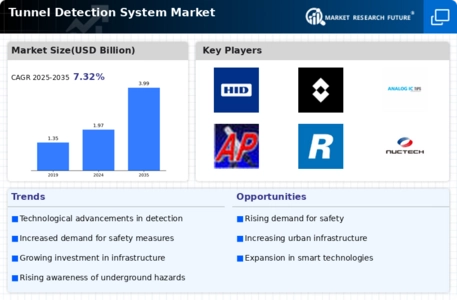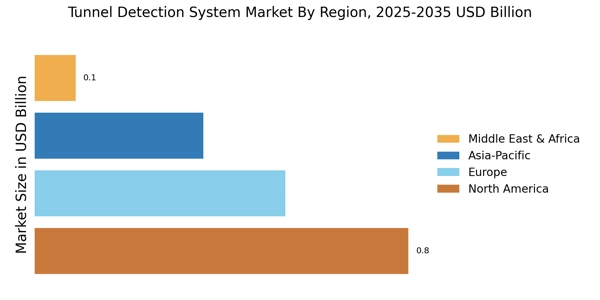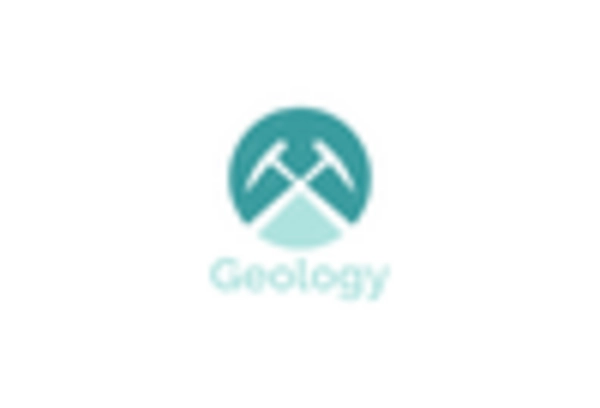Growing Infrastructure Development
The ongoing expansion of infrastructure projects worldwide is a primary driver for the Tunnel Detection System Market. As urbanization accelerates, the demand for efficient transportation networks, including tunnels, increases. This trend is evident in various regions, where governments are investing heavily in public transport systems, highways, and underground facilities. For instance, the International Transport Forum reported that infrastructure investment could reach trillions of dollars in the coming years. Consequently, the need for advanced tunnel detection systems to ensure safety and operational efficiency becomes paramount. These systems help in monitoring structural integrity and detecting potential hazards, thereby supporting the overall growth of the tunnel detection sector.
Regulatory Compliance and Standards
The establishment of stringent regulatory frameworks and standards is a key driver for the Tunnel Detection System Market. Governments are implementing regulations that mandate the use of advanced detection systems in tunnel construction and maintenance to ensure public safety. Compliance with these regulations is not only a legal requirement but also a critical factor in gaining public trust. The market is witnessing a surge in demand for systems that meet these evolving standards, as companies seek to avoid penalties and enhance their reputations. As regulatory bodies continue to refine safety standards, the demand for innovative tunnel detection solutions is likely to increase, further stimulating market growth.
Rising Concerns Over Safety and Security
Safety and security concerns are increasingly influencing the Tunnel Detection System Market. With the rise in urban population density, the potential risks associated with tunnel operations have become more pronounced. Governments and private entities are prioritizing the implementation of advanced detection systems to mitigate risks such as structural failures or unauthorized access. According to recent data, the market for safety and security solutions in infrastructure is projected to grow significantly, reflecting a heightened awareness of these issues. The integration of sophisticated detection technologies not only enhances safety but also ensures compliance with stringent regulations, thereby driving market growth.
Increased Investment in Smart City Initiatives
The Tunnel Detection System Industry. As cities strive to enhance urban living through technology, the integration of smart infrastructure becomes essential. Tunnel detection systems equipped with IoT capabilities and data analytics are increasingly being adopted to improve urban mobility and safety. Reports indicate that investments in smart city projects are expected to reach hundreds of billions of dollars, creating a favorable environment for advanced detection systems. This trend not only supports the development of efficient transportation networks but also aligns with sustainability goals, thereby fostering market growth.
Technological Innovations in Detection Systems
Technological advancements play a crucial role in shaping the Tunnel Detection System Market. Innovations such as artificial intelligence, machine learning, and advanced sensor technologies are revolutionizing how tunnels are monitored and maintained. These technologies enable real-time data analysis and predictive maintenance, which can significantly reduce operational costs and enhance safety. The market for smart detection systems is expected to witness substantial growth, with estimates suggesting a compound annual growth rate of over 10% in the next few years. As these technologies become more accessible, their adoption in tunnel detection systems is likely to increase, further propelling market expansion.

















Leave a Comment